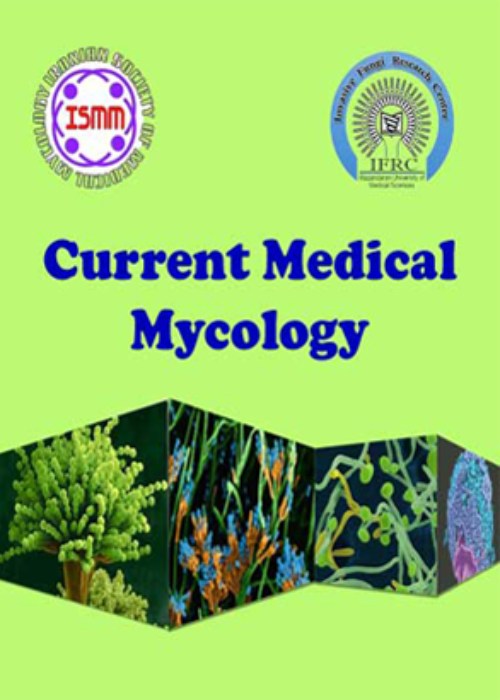Serum immunoglobulin E and immunoglobulin G reactivity to Agaricus bisporus proteins in mushroom cultivation workers
Author(s):
Abstract:
Background and
Purpose
Although molds are regarded as the main fungal allergen sources, evidence indicates that spores of Basidiomycota including Agaricus bisporus (A. bisporus) can be also found at high concentrations in the environment and may cause as many respiratory allergies as molds. The aim of the present study was to evaluate specific immunoglobulin E (IgE) and immunoglobulin G (IgG) antibodies against A. bisporus via immunoblotting technique in individuals working at mushroom cultivation centers.Materials And Methods
In this study, 72 workers involved in the cultivation and harvest of button mushrooms were enrolled. For the analysis of serum IgE and IgG, A. bisporus grown in Sabouraud dextrose broth was harvested and ruptured by liquid nitrogen and glass beads. The obtained sample was centrifuged and the supernatant was collected as crude extract (CE). CE was separated via Sodium Dodecyl Sulfate-Polyacrylamide Gel Electrophoresis (SDS-PAGE). The separated proteins were transferred to a nitrocellulose filter and the bands responsive to IgE and IgG were identified by anti-human conjugated antibodies. All participants were screened in terms of total IgE level.Results
Among 72 workers, 18 (25%) had a total IgE level higher than 188 IU/mL. In SDS-PAGE, the CE of A. bisporus showed 23 different protein bands with a molecular weight range of 13-80 kDa. The sera of 23.6% and 55.5% of participants showed positive response, with specific IgE and IgG antibodies against A. bisporus in the blot, respectively. The bands with molecular weights of 62 and 68 kDa were the most reactive protein components of A. bisporus to specific IgE antibodies. Moreover, bands with molecular weights of 57 and 62 kDa showed the highest reactivity to IgG, respectively. Also, 62 and 68 kDa components were the most reactive bands with both specific IgG and IgE antibodies.Conclusion
The obtained findings revealed that A. bisporus has different allergens and antigens, which contribute to its potential as an aeroallergen in hypersensitivity-related reactions of the lungs. Language:
English
Published:
Current Medical Mycology, Volume:1 Issue: 2, Jun 2015
Pages:
25 to 30
magiran.com/p1563817
دانلود و مطالعه متن این مقاله با یکی از روشهای زیر امکان پذیر است:
اشتراک شخصی
با عضویت و پرداخت آنلاین حق اشتراک یکساله به مبلغ 1,390,000ريال میتوانید 70 عنوان مطلب دانلود کنید!
اشتراک سازمانی
به کتابخانه دانشگاه یا محل کار خود پیشنهاد کنید تا اشتراک سازمانی این پایگاه را برای دسترسی نامحدود همه کاربران به متن مطالب تهیه نمایند!
توجه!
- حق عضویت دریافتی صرف حمایت از نشریات عضو و نگهداری، تکمیل و توسعه مگیران میشود.
- پرداخت حق اشتراک و دانلود مقالات اجازه بازنشر آن در سایر رسانههای چاپی و دیجیتال را به کاربر نمیدهد.
In order to view content subscription is required
Personal subscription
Subscribe magiran.com for 70 € euros via PayPal and download 70 articles during a year.
Organization subscription
Please contact us to subscribe your university or library for unlimited access!


